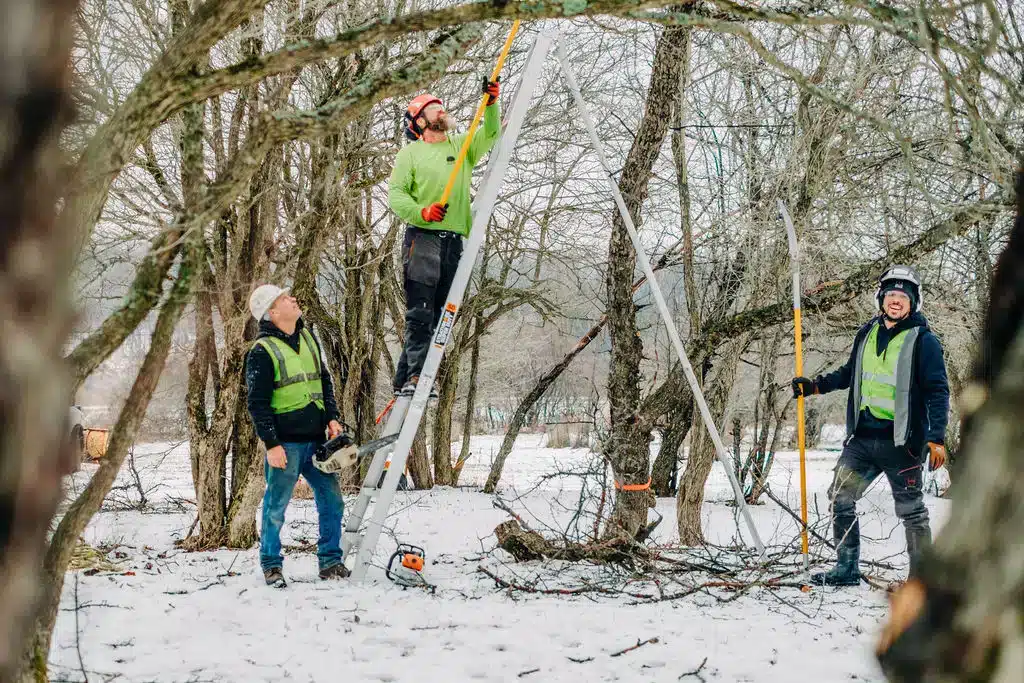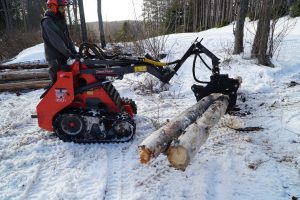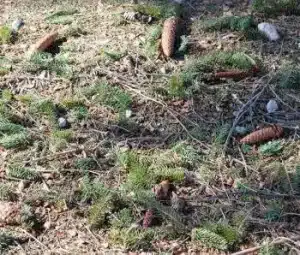Alright, fellow tree enthusiasts, if you’re dreaming of fruit that would make Snow White jealous, listen up! February isn’t just for groundhogs and Valentine’s chocolates — it’s prime time for fruit tree pruning! Our merry band of arborists have been busy as beavers, snipping and clipping apple, pear and peach trees across Tioga, Potter and Steuben counties. But before we unleash our inner Edward Scissorhands, let’s understand the “why” behind pruning.
Fruit trees, bless their leafy souls, need three things to bear tasty fruit: sufficient water, aerated and nutrient rich soil and light. And guess what? Light, particularly, plays a pivotal role, and this is where pruning comes into play.
Picture this: your tree, snug as a bug in its winter coat, is sporting numerous fruit buds (while also sporting “vegetative” buds responsible for branch structure and leaves). Come spring, those buds soak up sunlight like a thirsty sponge, giving you bigger, juicier, and tastier fruit. Proper pruning, among other benefits, enhances light penetration and consequently improves fruit quality.
Now, before you start swinging your pruning shears like a mad lumberjack, let’s talk strategy. Pruning isn’t haphazard. Arborists follow two acronyms: the 3 “D’s” and the “CAC’s”. The first involves removing dead, dying and diseased branches. Mature trees, if left unpruned, might accumulate many of these, but it’s a natural process as trees shed weak branches. Removing them redirects energy to healthier fruit buds.
After addressing the 3 “D’s”, attention shifts to the “CAC’s”: clustering, crossing and acute branches. These branches compete for light access, hindering canopy openness crucial for fruit quality. Acute branches, with angles less than 45 degrees, are typically weakly attached and prone to failure under fruit load. Get rid of them!
Finally, after removing the 3 “D’s” and the “CAC’s”, it might be necessary to carefully reduce the canopy. Upright branches, common at the top of the tree, can shade lower parts. However, arbitrarily “topping” the tree leads to future problems. Instead, reduce upright limbs to appropriate lateral branches to aid natural healing. Think of it like a tree haircut. Just don’t go crazy and give it a mullet. Nobody wants a business in the front, party in the back tree.
Now, a word of caution: safety first. No tree is worth losing a finger over. Wear your safety glasses, use sharp tools (not your kitchen scissors), and for heaven’s sake, don’t pull a Tarzan off your ladder. But lest I sound like an OSHA inspector, let’s move on.
And please, for the love of all things leafy, don’t go Edward Scissorhands on your tree. No tree wants to wake up looking like a poodle. Limit pruning to 25% of the leaf bearing canopy to maintain tree health. Stripping the canopy bare, although it may rebound, is detrimental in the long term.
As a final note, this brief guide isn’t exhaustive but offers some basic steps toward fruit tree success. So, go forth, fellow tree whisperers, and may your fruit be plentiful and your branches untangled.
Mike White is an ISA board certified master arborist and owns Treemaster LLC. If you’re interested in learning more about fruit trees or any other tree related issues, you’ll find him to be moderately obsessed with trees. You can reach him at mike@treemasterllc.com.





